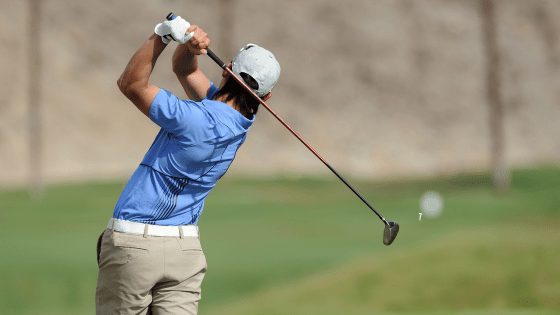Treatment for Back Pain in Golfers
Are you a Golfer and experiencing back pain when you play golf?
Our Physiotherapists at the Stansted Park clinic offer a Golf service, where we use golf specific testing to analyse your body and how your movements affect your swing so you can return back to the course pain-free, stronger and performing better.
Common Golf Injuries – Back Pain
The most common golf injury we see is pain in the mid to lower back. This is due to the rotational stresses you put onto your back as you swing. The golf swing requires you to rotate through your thoracic spine whilst also flexing and extending through your lumbar spine as you transition between your backswing and follow through. The average club head speed for an amateur golfer is 93 mph, therefore there is a lot of mechanical power being delivered through your body to enable you to hit the ball to your desired distance. When you play a round of golf even as a scratch golfer you will accumulate around 60 shots from tee to green, that repetitive load can have an effect on the muscles around the mid back. Therefore, it is common for players to notice acute back pain as a result of playing golf.
Common Symptoms
- Dull achy pain either side of the mid spine
- A pulling sensation as you swing the club
- A noticeable reduction in rotation throughout your swing
- Difficulty bending over to pick your ball up out of the hole or placing a tee in the ground
- Difficulty keeping posture through the putting stroke
What does the research tell us?
Through motion and video analysis, prevalence studies, two common swing characteristics have the highest correlation with the onset of low back pain. These swing characteristics are 1) Reverse Spine Angle and 2) Early Extension.
Reverse Spine Angle- is identified at the top of the backswing. If the torso is bending towards the target at the top of the backswing, that is classified as a reverse spine angle. From this position of side-bending towards the target, the spine must rapidly extend and side bend the opposite direction during the downswing in order to return the club to the golf ball. This motion places remarkably large compressive force and stress through the lumbar spine joints.
Early Extension- is classified as extending the spine/hips towards the ball instead of rotating the hips/lower body. This, similar to the mechanism during the reverse spine angle, results in a large amount of compressive load (weight) placed through the lumbar spine facet joints.
How we can help treat Golfers with back pain
At physio-logical we offer golf screening assessments, that enable us to find any movement restrictions that may be affecting the way you swing the club. Diagnosing these contributory stressors within the golfing population can be broken up into two areas: physical limitations and swing mechanics. Every part of the body either plays a stability or mobility role. Extremely common examples of physical limitations that often contribute to low back pain are hip mobility limitations, thoracic spine mobility deficits, and hip and core weakness.
To book a golf screening session with Physio-logical, based in Rowlands Castle, Hampshire then please book online, call 02394 350270 or email us at enquiries@physio-logical.net.




